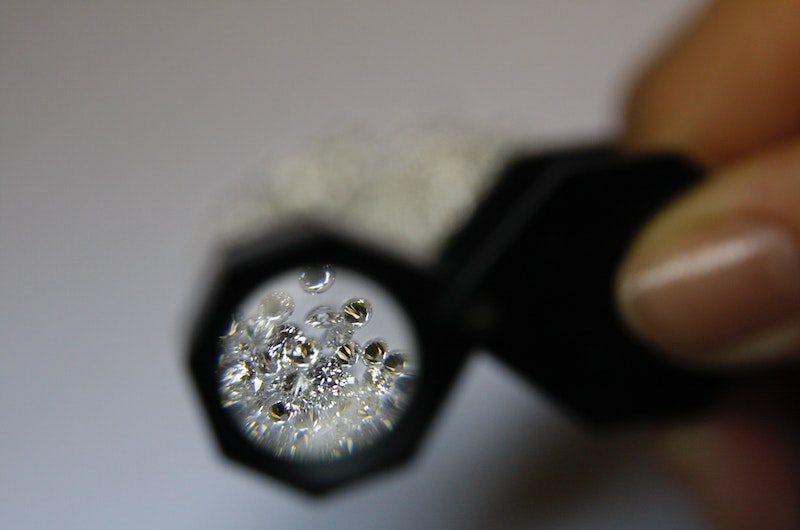The Sparkly Science – What Makes Diamonds So Special
Diamonds are one of the most precious and desired gemstones in the world. But have you ever wondered what makes diamonds so coveted and unique? Sure, their sparkle and shine make them ideal for jewelry, but their appeal goes way deeper than just aesthetics. Diamonds actually have an incredible scientific story behind how they’re formed and what gives them their signature qualities. In this post, I’m sharing the sparkly science behind diamonds from their initial creation deep underground all the way through their journey to the jewelry store.
The Formation of Diamonds
To start understanding diamonds, we need to go way down – over 90 miles (150 km) below the Earth’s surface. It’s in these extreme depths and high pressures that carbon-based diamonds are able to form. The temperatures and pressures required to make diamonds occur naturally in two places deep within the Earth – in the lithosphere and lower mantle. For a diamond to form, carbon materials like graphite must be subjected to immense heat and pressure over long periods of time. We’re talking temperatures above 2,000°F (1,100°C) and pressures around 60,000 times greater than Earth’s surface pressure. Only under these extreme conditions can carbon atoms arrange in the specific crystal structure that makes up a diamond.
It can take diamonds hundreds of millions of years to form underground as tectonic forces steadily increase the heat and pressure at precise locations. Once formed, diamonds will remain trapped deep in the rocks. Sometimes volcanic or tectonic activity can bring diamonds closer to the surface over many more millions of years. This long, slow process is what gives diamonds their value – they quite literally took eons to make. The extreme conditions required are also what give diamonds their prized hardness and durability.
The Composition and Properties of Diamonds
So in essence, diamonds are just chunks of crystallized carbon. But it’s their unique crystalline structure that endows them with special optical and physical properties. Diamonds are made of repeating patterns of carbon atoms arranged in a cubic crystal structure. This tightly bonded crystal lattice is incredible hard, contributing to diamonds being the hardest natural material on Earth. It also makes them thermally conductive but a poor electrical conductor.
Their crystalline structure is also responsible for diamonds’ incredible brilliance and “fire” – the scintillating flashes of colored light seen when light interacts with the facets of a cut and polished diamond. As light enters the diamond, it’s refracted and reflected between its many cleavage planes in a rainbow of colors. The “4 C’s” that determine a diamond’s quality and price – cut, color, clarity and carat weight – all influence its light performance. Diamonds can appear colorless, yellow, brown, blue, green or red depending on trace impurities in their crystal structure.
From Deep Earth to Your Fingers
So now you have an idea of how diamonds form far below the Earth’s surface over immensely long timescales. But how do they make their way from volcanic vents to the jewelry store? After diamond-bearing rocks are slowly transported closer to the surface, diamonds may be unearthed by erosion or active mining operations. Commercial mining for diamonds is primarily done in pipes or volcanic formations called kimberlites, like in Africa and Canada. Advanced techniques like seismic imaging help miners locate kimberlite pipes that may contain diamonds deep below ground.
Once rough diamonds are extracted, a multi-step process transforms them into the glittering gems prized in fashion and fine jewelry. Diamonds undergo grading for their physical traits like cut, color and clarity. The highest quality gem-grade diamonds are carefully cut and polished by skilled artisans to maximize light reflection off their many polished facets. Getting the precise angles and proportions right during cutting determines whether a rough diamond’s sparkle and fire can shine through. Finally, mounted in rings, pendants and earrings, diamonds wow wearers with their natural brilliance and symbolism of purity, strength and eternal devotion.
The Science of Diamonds in a Nutshell
In summary, diamonds’ appeal lies not just in their sparkle but in the incredible natural science behind their creation and properties. Their formation deep under intense heat and pressure gives them legendary hardness and durability. Their unique crystal structure refracts light into dazzling rainbow colors. And their journey from the Earth’s mantle through mining and crafting transforms them into symbols of prestige. With over a billion years in the making, it’s no wonder diamonds remain a prized gemstone. Their sparkly science makes them truly one of a kind treasures to be passed down through generations. So next time you gaze into a perfectly cut diamond’s infinite facets, appreciate the extreme geological forces that allowed its formation – now that’s some sparkly science!
